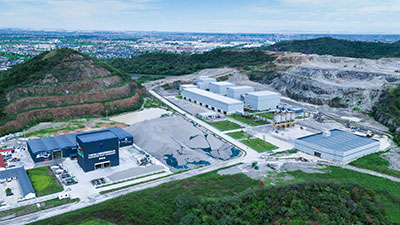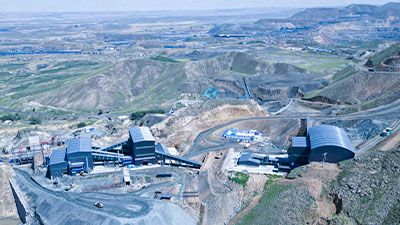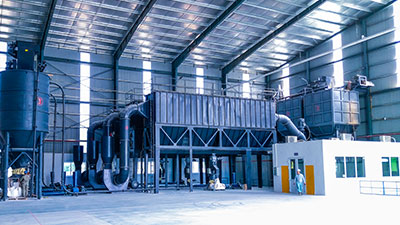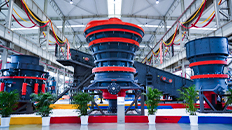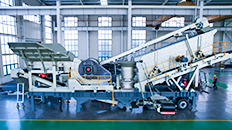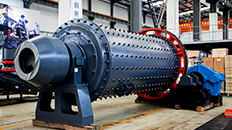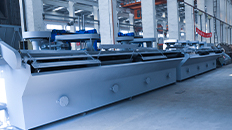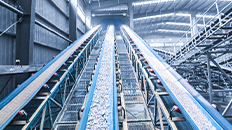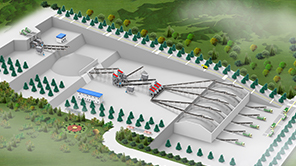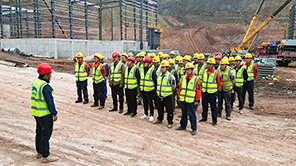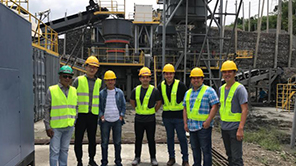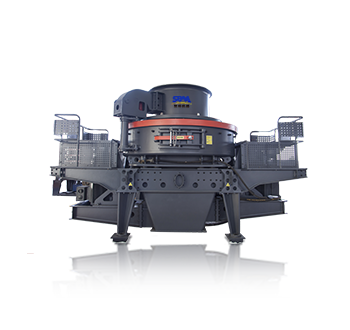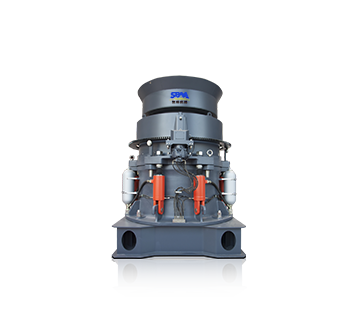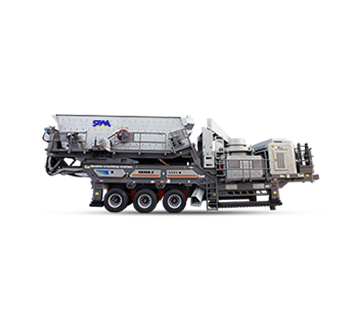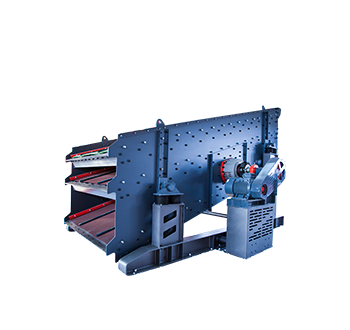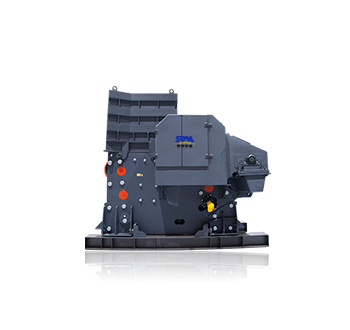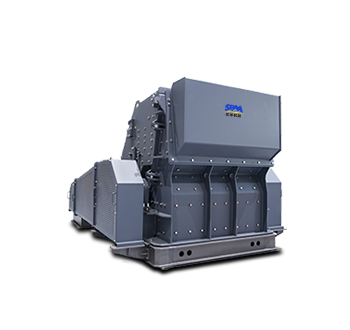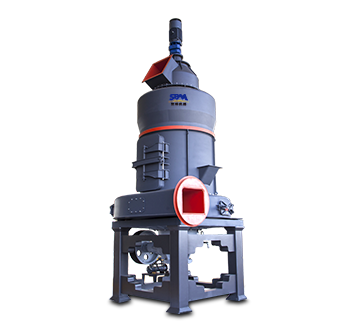Summary:Vertical roller mill is suitable for the large-scale processing of non-metallic mineral powders below 1250 mesh. Its large-scale and energy-saving effects are significant.
Vertical roller mill is suitable for the large-scale processing of non-metallic mineral powders below 1250 mesh. Its large-scale and energy-saving effects are significant. It has simple operation, convenient maintenance, and simple process layout and has the advantages of small area, low investment in civil construction, low noise, and good environmental protection. And here are some factors affect the operation and running of vertical roller mill.



Characteristics of the raw material
The characteristics of the raw materials mainly refer to hardness, particle size, moisture content and grindability (Bond work index), etc.
Hardness of raw material
The hardness of the grinding material is usually characterized by Mohs hardness (range 1-10). Generally speaking, the higher the hardness of the material is, the worse the grindability and the higher the wear of vertical roller mill. Therefore, the material hardness is directly related to the product output and the service life of the wear parts of the mill.
Particle size of raw material
Vertical mills have a certain range of requirements for the particle size of the raw materials.
If the feeding size is too large, the primary grinding efficiency will be reduced, the number of cycles of the material will increase, and the grinding power consumption of the mill will be increased invisibly.
If the feed size is too small, the powdery material will inevitably increase. Due to the poor adhesion of fine particles and the effect of internal air flow, the fluidization trend of the material bed is obvious, which makes the vertical roller mill unable to effectively engage a large number of particles, resulting in the material layer is unstable, causing vibration.

Moisture content of raw material
The control of moisture content of raw material is very important for the stable operation of vertical roller mill. If the moisture content of the raw material is too large, the material will stick to the fine powder on the material bed, resulting in the formation of a layer on the grinding disc. Under the condition of continuous feeding, the material layer of the grinding disc will continue to thicken, so that the grinding roller cannot effectively crush and grind the material. The mill will vibrate or stop due to excessive load.
Grindability of raw material
The grindability of grinding materials is directly related to production capacity, power consumption and service life of roller liner of vertical roller mill. If the material has good grindability, it is easy to crush and grind, and is easy to produce ultra-fine powder; on the contrary, the material with poor grindability requires multiple grinding processes and larger grinding pressure, which increases the grinding power consumption and accelerates the roller sleeve and liner, reducing the service life.
Pressure difference of vertical roller mill
The pressure difference is one of the important parameters reflecting the circulating load of the materials inside the vertical roller mill. The pressure difference of the mill is mainly composed of two parts, one is the local ventilation resistance at the wind ring of the vertical roller mill; the other part is the resistance generated by the powder concentrator when selecting powder. The sum of these two resistances constitutes the pressure difference of the mill.
There are many factors that affect the pressure difference of the mill, such as the grindability of the material, the feed volume, the system air volume, the grinding pressure, and the speed of the powder concentrator.
The increase of pressure difference indicates that the amount of raw materials entering the mill is greater than the amount of finished products, and the circulating load in the mill increases. At this time, the current of the feeding hoist becomes larger, and the slag discharge amount increases. And the material layer is continuously thickening.
The decrease of the pressure difference indicates that the amount of raw material entering the mill is less than the amount of the finished product, and the circulating load in the mill is reduced. At this time, the current of the feeding hoist is reduced, and the amount of slag discharge is reduced. And the material layer is gradually thinning.

System ventilation volume
Proper ventilation volume is a necessary condition for the stable operation of the vertical roller mill. The ventilation volume in the whole grinding system directly affects the output production and fineness of the product.
If the ventilation volume is large, the wind speed in the mill increases, the ability of drying and conveying materials is enhanced, the internal and external circulation of the mill reduce, the number of coarse particles on the material bed increases, and the output of the mill is increased. If the air volume is too large, it may cause the product fineness to be unqualified (rough out) or the product fine powder content to decrease (the number of cycles is less, the grinding time is short), the quality is reduced, and the mill will also vibrate due to the thin layer of material.
If the ventilation volume is small, the wind speed in the mill is reduced, the drying and material carrying capacity is weakened, the internal and external circulation of the mill is increased, the material layer is thicker, the power consumption of the mill is increased, and the product fineness is finer, but the output of the mill is reduced, and it may cause vibration or vibration stop because the material layer is too thick.
Working pressure of grinding roller
The grinding force of vertical roller mill comes from the dead weight of grinding roller and the pressure of hydraulic station, and the hydraulic tension device is the main source of grinding force.
The working pressure of the grinding roller needs to be reasonably set according to the feed volume, material layer thickness, product fineness and other factors. If the pressure is too small, effective grinding cannot be achieved, resulting in low powder yield and low production capacity. Excessive pressure may lead to instability of the material layer, which may cause unnecessary damage to the reducer.
Rotation speed of classifier
When the system has a certain amount of ventilation, the rotor speed is high and the fineness of the grinding material is high; on the contrary, when the coarse powder is produced, the rotor speed needs to be reduced.
Other factors
(1) Height of retaining ring
The height of the retaining ring directly affects the stability of the material layer and the grinding efficiency of the vertical roller mill. If the height of the retaining ring is too high, this is not conducive to the overflow of the material, leading to the thickening of the material bed. Some qualified products cannot be taken away by the airflow on the material bed in time, resulting in over-grinding. If the height of the retaining ring is too low, the powder overflow speed will increase, resulting in the material bed being too thin, causing the grinding roller to be unable to pressurize or causing the mill to vibrate.
(2) The clearance area of the air ring
In actual production, it is often found that the amount of material returned by the mill is relatively large, but the operation of the vertical roller mill is still stable. At this time, the clearance area of the air ring can be appropriately reduced (in the retaining ring or the outer edge of the wind ring repair welding round steel), improve the wind speed at the air ring, increase the capacity of the material, reduce the amount of slag discharge, which will improve the production capacity.
(3) Wear of grinding roller and disc
According to experience, when the vertical roller mill runs for a long time, the production capacity will drop to a certain extent, mainly due to the wear of the grinding roller and the grinding disc, which leads to changes in the grinding structure and grinding pressure in the grinding area.
The problem of grinding roller and disc wear is more likely to reflect the sudden drop in production capacity for finished products with high fineness requirements. At this time, it is advisable to adjust the surface of the roller sleeve, re-surfacing (applicable to the surfacing roller sleeve) or replace with a new roller sleeve and grinding disc liner (the above measures should be considered when the production capacity is reduced by more than 10%).

